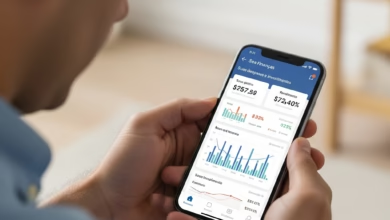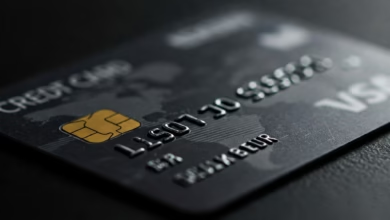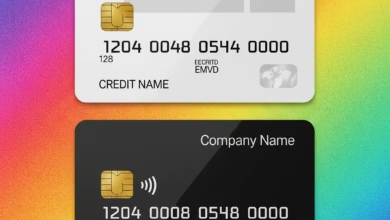Understand how credit card usage affects your FICO score
Learn how your credit card impacts your FICO score

Have you ever done everything right—paid every bill on time, avoided new debt—only to check your credit score and see it barely budged? Or worse, maybe it even dropped a few points, leaving you frustrated and confused.
If this sounds familiar, you’ve likely encountered the most powerful, misunderstood, and volatile factor in your credit profile: credit card utilization.
Your payment history is king, but it takes years to build. Credit utilization, on the other hand, is the “fast lane.” It can change your FICO score dramatically, for better or worse, in as little as 30 days. It’s the secret weapon that separates “good” scores from “excellent” ones, and it’s almost entirely within your control.
In this guide, we’ll pull back the curtain on this critical metric. We’ll explain what it is, why FICO is so obsessed with it, the “magic numbers” you need to know, and the simple strategies you can use today to master your utilization and take control of your credit score.
What Is the FICO Score? A Quick Refresher

Before we dive into utilization, let’s quickly review what we’re talking about. The FICO Score, created by the Fair Isaac Corporation, is the three-digit number that the vast majority (over 90%) of U.S. lenders use to decide how risky you are as a borrower.
Your score isn’t just one number; it’s a complex recipe. FICO models are built on five main ingredients, each with a different weight:
- Payment History (35%): The most important factor. Do you pay your bills on time?
- Amounts Owed (30%): How much debt do you have? This is where credit utilization lives, and it’s a massive part of the pie.
- Length of Credit History (15%): How long have your accounts been open?
- New Credit (10%): Have you applied for a lot of new credit recently?
- Credit Mix (10%): Do you have a healthy mix of different credit types (e.g., credit cards, auto loans, a mortgage)?
As you can see, “Amounts Owed” is the second-biggest piece. And the single most important part of that 30% is your Credit Utilization Ratio (CUR).
Decoding “Credit Card Utilization”: The “Amounts Owed” Powerhouse
So, what is this all-important ratio?
Credit Card Utilization (CUR) is the percentage of your total available revolving credit that you are using at any given time.
That’s it. It’s a simple math problem. The formula looks like this:
Total Credit Card Balances / Total Credit Card Limits = Your Utilization Ratio
Let’s use a simple example:
- You have two credit cards.
- Card A has a $7,000 limit and a $2,000 balance.
- Card B has a $3,000 limit and a $1,000 balance.
- Your Total Limits: $7,000 + $3,000 = $10,000
- Your Total Balances: $2,000 + $1,000 = $3,000
Your overall utilization is: $3,000 / $10,000 = 0.30, or 30%
This 30% number is what FICO sees, and it’s a huge piece of data.
Why Your FICO Score Cares So Much About Utilization
Why the obsession? Because your utilization ratio is one of the strongest predictors of future risk.
Think about it from a lender’s perspective:
- A person with high utilization (e.g., 85%) appears to be “maxed out.” They are using almost all their available credit, which suggests they might be in financial distress, are living beyond their means, and may have trouble making payments in the near future. They are a high-risk borrower.
- A person with low utilization (e.g., 5%) appears to be in control. They have plenty of available credit but choose not to use it. This signals to lenders that they manage their finances responsibly and have a “buffer” for emergencies. They are a low-risk borrower.
Statistical models have proven, time and again, that people who max out their credit cards are far more likely to default on a loan than people who keep their balances low. Your CUR is, in FICO’s eyes, a direct reflection of your financial health and self-discipline.
The “Magic” Numbers: What’s a Good Credit Utilization Ratio?

This is the number one question most people have. You’ll hear one piece of advice repeated everywhere:
“Keep your utilization below 30%.”
This is good, solid advice. A CUR above 30% is where your score generally starts to take a noticeable hit. But if you’re aiming for an excellent FICO score (780+), “good” isn’t good enough.
Here’s the breakdown of utilization “cliffs” or thresholds:
- 70% – 100% (The Red Zone): This is a major red flag. Maxing out your cards will severely damage your FICO score.
- 50% – 70% (Poor): This is still considered very high and will have a significant negative impact.
- 30% – 50% (Fair to Poor): This is where most people get into trouble. You are signaling to lenders that you are “over-extended.”
- 10% – 30% (Good): This is the standard “safe zone.” Your score won’t be penalized, but it’s not being optimized, either.
- 1% – 10% (Excellent): This is the sweet spot. People with the highest FICO scores in the nation (800+) almost always keep their utilization in the single digits. This is the goal.
The 0% Utilization Myth: Can You Have Too Little Utilization?
If 5% is great, is 0% even better? Not necessarily.
This is an advanced, but important, concept. FICO’s models want to see that you use credit, but that you use it responsibly.
If you have five credit cards and all of them report a $0 balance to the credit bureaus, it can look like you’re not using credit at all. This can, in some FICO models, result in a slightly lower score than if you had one card report a very small balance (say, $10).
This has led to an advanced strategy called “AZEO” (All Zero Except One). This is where a credit-savvy person pays all their cards down to $0 before they report, except for one card, which they let report a tiny, non-zero balance (like 1% utilization).
The Layperson’s Takeaway: Don’t obsess over this. A 0% utilization score is infinitely better than a 30% or 50% utilization score. But if you’re trying to squeeze every last point out of your score, letting one card report a small, positive balance is the optimal move.
How FICO Calculates Utilization: Per-Card vs. Overall
This is another critical detail that many people miss. FICO doesn’t just look at your overall 30% from our example. It also analyzes the utilization on each individual card.
Let’s go back to our example:
- Overall Utilization: $3,000 / $10,000 = 30% (which is just “okay”)
But let’s look at the individual cards:
- Card A: $2,000 / $7,000 = 28.5% (Good)
- Card B: $1,000 / $3,000 = 33.3% (Not so good)
Now, let’s imagine a different scenario with the same 30% overall utilization:
- Card A: $3,000 balance / $7,000 limit = 42%
- Card B: $0 balance / $3,000 limit = 0%
- Overall: $3,000 / $10,000 = 30%
Even though the overall utilization is the same 30%, the second scenario is worse for your score. Why? Because that one card with a 42% balance is a red flag. And if you had maxed out Card B (e.g., $3,000 balance on a $3,000 limit), your score would be severely punished, even if your overall utilization was still 30% (assuming you had other cards with $0 balances).
The Takeaway: It’s best to keep your balances low across all your cards, not just on average.
When Does Your Utilization Get Reported? (The Timing Trap)

This is, without a doubt, the most important section of this article. This is the “trap” that catches almost everyone.
Your utilization is NOT what your balance is on your due date.
Read that again.
You might use your card for $2,000, get your bill, and pay it in full by the due date. You think, “Great! I paid in full, so my utilization is 0%.”
This is incorrect.
Your credit card issuer typically reports your balance to the credit bureaus (Equifax, Experian, TransUnion) once a month. And the number they report is the balance that appears on your monthly statement.
Here’s a typical timeline:
- October 1 – Oct 28: You use your card for groceries, gas, and bills. Your balance climbs to $1,500.
- October 29 (Statement Closing Date): Your billing cycle ends. Your issuer generates a statement that says, “You owe $1,500.”
- October 31 (Reporting Date): Your issuer reports to the credit bureaus: “This person’s balance is $1,500.”
- November 25 (Due Date): You pay the $1,500 in full, as you always do.
The Problem: Even though you paid in full and never paid a dime of interest, for that entire month, FICO saw you as having a $1,500 balance. If your credit limit is only $3,000, your FICO score was calculated using a 50% utilization ratio, which is very high.
This is why people who pay their bills in full every month can still have high utilization and a stubbornly low score.
Actionable Strategies to Master Your Credit Utilization
Once you understand the “Timing Trap,” you can beat it. Here are the practical, actionable strategies to take control of your utilization ratio.
1. The “Pre-Payment” Trick (Pay Before the Statement Closes)
This is the single most effective strategy. You don’t have to change your spending at all. You just have to change when you pay.
- Find your statement closing date for each credit card. (It’s on your statement, often near the top).
- Set a calendar reminder for 2-3 business days before that date.
- On that reminder day, log in to your account and make a payment.
- Your goal is to pay the balance down to a very small number (e.g., 1-10% of your limit) before the statement closes.
Example:
- Your statement closes on the 29th. Your limit is $5,000.
- On the 27th, you log in and see your balance is $2,000.
- You make a payment of $1,950.
- On the 29th, your statement closes with a balance of only $50.
- This is the number that gets reported to the credit bureaus.
- Your utilization is now $50 / $5,000 = 1%.
- Your FICO score will love you for this.
2. Request a Credit Limit Increase (CLI)
Remember the formula: Balance / Limit. If you can’t (or don’t want to) lower your balance, you can achieve the same goal by raising your limit.
Example:
- You have a $1,000 balance on a $3,000 limit card. Your utilization is 33%.
- You go online or call your card issuer and request a credit limit increase.
- They approve you for a new limit of $6,000.
- You didn’t pay a penny, but your new utilization is $1,000 / $6,000 = 16.6%.
Your score will go up, just from this simple request.
Important Caveat: Before you ask, find out if your issuer does a “soft pull” or a “hard pull” for CLIs. A soft pull has no effect on your score. A hard pull (a formal credit application) can temporarily ding your score a few points, so you only want to do it if you’re confident you’ll be approved for a significant increase.
3. Spread Your Spending
Instead of putting all your monthly expenses ($2,000) on one card with a $5,000 limit (40% utilization), spread it out.
- Put $700 on Card A ($5,000 limit) = 14%
- Put $700 on Card B ($7,000 limit) = 10%
- Put $600 on Card C ($4,000 limit) = 15%
Your overall utilization is the same, but you avoid having any single card report a high, “risky” balance.
4. Consider a Debt Consolidation Loan
If your high utilization is due to long-term debt rather than monthly spending, it can feel impossible to pay down. This is where a debt consolidation loan (a personal loan) can be a powerful fix.
When you take out a personal loan and use it to pay off $10,000 in credit card debt:
- Your credit card balances drop to $0.
- Your revolving utilization plummets from (for example) 80% to 0%.
- Your FICO score often sees a massive jump as a result.
You’ve converted high-risk, high-impact revolving debt into a “safer,” fixed-payment installment loan, which FICO scores much more favorably.
Common Pitfalls: How You Can Accidentally Hurt Your Score

Understanding utilization also means knowing what not to do. These are the most common mistakes people make.
1. Closing an Old Credit Card
This is the cardinal sin of credit management. It seems harmless—you don’t use the card anymore, so you close it. But this can devastate your utilization in two ways:
- It Wipes Out Your Available Credit: Let’s say you have $2,000 in total balances and $20,000 in total limits (a healthy 10% utilization). You close an old, unused card that had a $10,000 limit. Now, your total limits are only $10,000. Your utilization instantly doubles to 20% ($2,000 / $10,000). Your score will drop.
- It Shortens Your Credit Age: It also removes a (likely old) account from your report, which can lower your “average age of accounts” (the 15% slice of your score).
Rule of thumb: Unless the card has an outrageous annual fee, keep it open. Use it once every 6-12 months for a small purchase (and pay it off) to keep it active.
2. Ignoring Small Balances
You check your account and see a $4.50 balance. You think, “I’ll get it next month.” This is a terrible idea.
- As a balance: A $4.50 balance is harmless.
- As a late payment: If you forget and that $4.50 becomes 30 days past due, it’s a late payment. This is a stake through the heart of your “Payment History” (35%) and will tank your score for seven years.
Always pay something on every card, every month.
The FICO Score Evolution: FICO 10T and “Trended Data”
To add one final layer, it’s important to know where FICO is heading.
Most lenders still use older models like FICO 8 and FICO 9. These models use the “snapshot” method we’ve discussed—they only care what your utilization is right now, on the day your score is pulled. This is why you can “game” your score by pre-paying your balance right before you apply for a loan.
However, the newest models, like FICO 10T (and VantageScore 3.0 and 4.0), incorporate “trended data.”
Instead of just a “snapshot,” lenders can now see a “video.” They can see your balances and payment amounts for the last 24 months.
- Did you carry a $5,000 balance for six months?
- Or did you charge $5,000 every month but also pay $5,000 every month?
The second person is a “transactor” (pays in full) and is extremely low-risk. The first is a “revolver” (carries debt) and is higher-risk. Older FICO scores couldn’t tell the difference, but FICO 10T can, and it will score the transactor much higher.
The Takeaway: While you can still use the “pre-payment” trick for older scores, the future of credit scoring will reward consistent, long-term good habits—not just a last-minute fix.
Utilization is Your Score’s “Fast Lane”

You can’t change your payment history overnight, and you can’t add 10 years to your credit age. But you can change your credit utilization in 30 days or less.
It is the single most powerful, fast-acting lever you can pull to build, repair, or optimize your FICO score.
Understand the “Timing Trap” (report date vs. due date), aim to keep your balances low on all your cards, and never, ever close your oldest accounts. If you can master this one concept, you are well on your way to mastering your financial health.





